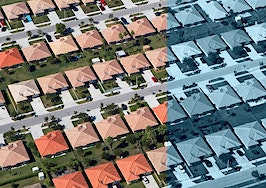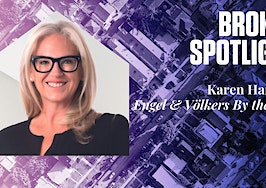On July 1, President Trump kicked off what would be a one-month social media campaign against the Obama Administration’s 2015 Affirmatively Furthering Fair Housing rule. The reasoning? Trump said the rule, which required local governments to create a plan for remedying housing discrimination and segregation, was leading to the demise of suburban neighborhoods.
“At the request of many great Americans who live in the suburbs, and others, I am studying the AFFH housing regulation that is having a devastating impact on these once-thriving suburban areas,” the president said in his first Twitter thread on July 1. “Corrupt Joe Biden wants to make them MUCH WORSE. Not fair to homeowners, I may END!”
By the end of the month, Trump announced he’d repealed the rule and saved suburban homeowners from crime, depreciating home values.
“I am happy to inform all of the people living their suburban lifestyle dream that you will no longer be bothered or financially hurt by having low-income housing built in your neighborhood,” Trump said in his final tweet about the AFFH rule on July 29. “Your housing prices will go up based on the market, and crime will go down. I have rescinded the Obama-Biden AFFH Rule. Enjoy!”
The announcements immediately drew criticism from fair housing advocates who supported the 2015 rule, and a host of questions from real estate professionals, including some Inman readers, who wanted to know what the passage and withdrawal of the rule meant for them and their clients.
Inman sat down with the National Association of Realtors Director of Fair Housing Policy Bryan Greene, National Fair Housing Alliance VP of Housing Policy Debby Goldberg, and Urban Land Institute Housing Center Director Christopher Ptomey to get the answers to your most urgent questions about AFFH and what it means for real estate.
The U.S. Department of Housing and Development declined the request for an interview.
Where does the Affirmatively Furthering Fair Housing mandate come from?
For most Americans, President Trump’s Twitter threads were their first introduction to Affirmatively Furthering Fair Housing. As explained in previous Inman articles, the Obama Administration’s 2015 rule simply provided a framework for local governments, states, and public housing agencies to follow through on pre-existing AFFH legislation included in the 1968 Fair Housing Act.
Section 808 of the Fair Housing Act requires the Secretary of Housing and Urban Development to “make studies with respect to the nature and extent of discriminatory housing practices in representative communities, urban, suburban, and rural, throughout the United States and publish and disseminate reports, recommendations, and information derived from such studies, including an annual report to the Congress.”
The Secretary is also mandated to assist federal, state and local governments and private or public agencies that have burgeoning or established programs to combat housing segregation among the Act’s protected classes (race, color, religion, sex, national origin, age, handicap, and family characteristics), and report the findings to Congress.
Who must follow the AFFH mandate? Does it apply specifically to suburban ZIP codes or areas?
According to HUD, jurisdictions who receive HUD funding, Community Development Block Grants or other grants geared toward providing affordable housing are mandated to conduct studies about housing segregation and submit that data to HUD for review and approval.
With that in mind, NAR Director of Fair Housing Policy Bryan Greene said it’s important for the public to understand the majority of suburban areas don’t receive HUD funding for public housing and they don’t receive Community Development Block Grants, which aim to provide economic and housing opportunities for low-to-moderate-income households.

Bryan Greene
“I think it’s important people know Affirmatively Furthering Fair Housing is about actions that communities that receive CDBG funds, undertake,” Greene said. “It’s certainly not principally about the suburbs, and there’s been a lot of talk in the media about the suburbs.”
“Affirmatively Furthering Fair Housing concerns those communities that get CDBG funds, and overwhelmingly, those are cities,” he added. “We’re really largely talking about divisions within cities, and we’re talking about communities that have these racial demarcation lines, where you know, one side of a Boulevard is white, and the other side is predominantly minority.”
How did HUD approach the AFFH mandate before 2015?
According to NFHA’s Debby Goldberg, HUD has done a lackluster job at overseeing and enforcing AFFH in the communities who are legally mandated to complete it.

Debby Goldberg
“In terms of segregation and fact [the AFFH mandate] was created, you know, the government played a large role in creating, promoting and sustaining [segregation], and that it’s been really harmful to our society as a whole,” Goldberg said. “You know, I’ve been thinking a lot lately about what would be different now if for the last 52 years since the Fair Housing Act was passed, we’d actually been working at this and if HUD had taken seriously
the mandate and the job Congress gave it in 1968.”
Greene and Goldberg said previous administrations were relatively hands-off with providing research guidance, enforcing the AFFH mandate, and tracking the actions of jurisdictions after turning in their work.
A 1995 bill championed by the U.S. Government Accountability Office (U.S. GAO) solidified the legal responsibility to fulfill the mandate; however, it failed at requiring jurisdictions to fulfill it at a high level. So, certain jurisdictions would do the bare minimum to escape possible legal ramifications.
“In the old days, you know, pre-2015, it was not uncommon for jurisdictions to hold Fair Housing poster contests during April, which is Fair Housing Month,” Goldberg explained. “They would have school kids do posters about fair housing, and somebody would judge them and they would, you know, pick a winner and award prizes.”
“That was what they would claim they were doing to affirmatively further fair housing,” she added. “And they would be deemed in compliance.”
What was the turning point for the enforcement of the rule?
The turning point for the enforcement of the AFFH rule came in 2005 when the Anti-Discrimination Center sued Westchester County, New York for defrauding the government of $50 million in CDBG funds.
According to an explainer about the trial, Westchester County officials refused to conduct research about fair housing and segregation patterns. Instead, officials conducted minimal research about affordable housing and followed restrictive zoning laws that relegated affordable housing developments to lower-income, minority communities.
“What Westchester was doing was developing a big report, but it was all about affordable housing needs and not about fair housing,” Greene explained. “It’s important to note that because they’re completely different topics.”
“Affordable housing is, you know, housing for people who might need assistance,” he added. “Fair housing is about creating diverse, inclusive communities and making sure people of different backgrounds aren’t excluded.”
In 2009, United States District Court Judge Denise Cote ruled in the Anti-Discrimination Center’s favor and mandated Westchester County to pay the Federal Treasury $62.5 million — $12.5 million above what they’d received. However, the Obama Administration, HUD, and the Department of Justice negotiate a new solution for Westchester by telling them to keep the money and use it for its intended purpose, which is fixing segregation.
How did the 2015 AFFH rule help jurisdictions like Westchester County?
As explained in previous Inman articles, the 2015 AFFH rule simply provided a roadmap for fulfilling the AFFH mandate set in the 1968 Fair Housing Act.
The 2015 rule required all local, state, and public housing officials to use the Affirmatively Fair Housing Assessment Tool, which uses HUD data and questionnaires to help leaders identify “patterns of integration and segregation; racially and ethnically concentrated areas of poverty; disparities in access to opportunity; and disproportionate housing needs, as well as the contributing factors for those issues.”
Greene, Goldberg and Ptomey all said the rule was HUD’s first, earnest attempt at meeting the mandate, and provided a comprehensive roadmap for jurisdictions to follow.

Christopher Ptomey
“The statute had been in place for 40 years and nobody even attempted to implement it,” Ptomey said of the time the Obama Administration passed the rule. “You know until the Obama administration did it was essentially ignored. No one ever tried to implement it in a serious way until they did.”
Goldberg said before the 2015 rule, local officials cobbled together plans based on incomplete information. However, the lengthy questionnaire and data sets HUD provided allowed local officials to have a better, more accurate and complete look at the state of fair housing in their jurisdictions.
“Being able to map it, I think was really useful for local officials and also for people in the community, including real estate professionals to the extent that they were involved in these discussions,” Goldberg explained. “Some of my colleagues have had conversations with people in various jurisdictions who went through this process.”
“He said, ‘You know, we never realized how much we had concentrated all of our affordable rental housing in particular neighborhoods and in neighborhoods that were very segregated and very poor, that we’ve never really thought about that before. But when we saw it on a map, we realize, ‘Oh, my God, is this what we’ve been doing?'”
Beyond housing, Goldberg said the 2015 AFFH rule helped local leaders address disparities in other areas, such as health and transportation.
“People like looking at where transportation works and doesn’t work for different types of workers,” she continued. “So if you work a shift, if you’re a hospital worker or a factory worker and you work at night, do you have access to public transportation that will get you home reliably at the time that you need it?”
“The answer is ‘no,'” she added. “We think of people working nine to five, and the transportation system to a large degree is set up to serve that population, right? That’s what the 2015 rule helped leaders think about.”
The 2015 AFFH rule provided more guidelines that ever, but was it effective?
According to President Trump and the current HUD Administration, the answer would be “no.” In January, HUD Secretary Ben Carson said the requirements of the 2015 rule were cumbersome and the 92-question assessment tool was “difficult to use.”
In its 84-page proposal to revise the 2015 rule, which was ultimately rejected by President Trump in July, HUD said 31 of the 49 jurisdictions to complete the assessment had their plans rejected or only accepted after HUD made revisions.
“The sheer volume of data and variety of expertise required under the 2015 rule placed an undue burden on jurisdictions,” read HUD’s January justification for replacing the rule. “While the assessment tool for public housing authorities was not finally implemented, under a published draft, PHAs would have been responsible for reporting on factors such as segregation levels and patterns dating back to 1990, community attitudes leading to observed patterns, and the presence or lack of private or public investment for the jurisdiction’s protected classes.”
“A commenter on the advance notice of proposed rulemaking on AFFH regulations issued in 2018 noted that this jurisdictional analysis was simply too complex to be effectively completed by staff without specific statistical and mapping knowledge, as housing providers generally have staff with skills that lie in providing affordable housing services, but not in providing complex statistical data analysis,” the justification continued. “The same is likely true for many smaller jurisdictions.”
When asked about the effectiveness of the 2015 rule, all three experts said it wasn’t in existence long enough to evaluate its strengths, weaknesses, and if it would complete the task of affectively furthering fair housing.”
“I think there was a lot of potential there,” Ptomey said. “Certainly, there was a lot of data and information that was being provided to jurisdictions to assist them in actually looking at what their history was and what they might need to do in order to affirmatively further fair housing in their particular context.”
“Unfortunately, it was early on in the actual implementation of the Obama administration’s approach,” he added. “We don’t know what the impact would have been. It hadn’t been applied across all jurisdictions yet.”
What’s the plan now?
The process of replacing the 2015 AFFH has been a winding road. Since 2018, HUD has been slowly chipping away at the rule, first by suspending the AFH Assessment tool in 2018 due to “difficulty in use,” and then proposing an amendment to the rule in January 2020.
As mentioned above, HUD released a new 84-page plan that stripped the assessment tool and reporting requirements, with the aim of giving local officials greater “flexibility” in evaluating housing discrimination and creating a plan of action.
“HUD’s commitment to Fair Housing remains as steadfast as ever before, and this improved rule reaffirms our mission of giving people more affordable housing options in communities across the country,” said Secretary Carson in January. “By fixing the old Affirmatively Furthering Fair Housing rule, localities now have the flexibility to devise housing plans that fit their unique needs and provide families with more housing choices within their reach.”
“In July, the Trump Administration put out a rule that didn’t even bear resemblance to their January proposed rule,” Greene explained. “It is a concern because what was put out in July, wasn’t what we commented on and wasn’t what the public commented on [in January]. It was completely different.”
“It just more or less said, ‘You know, don’t discriminate,'” he added. “You don’t have to do anything proactive to address segregation in your community.”
What are the consequences? How will the rescinding of this rule impact communities?
All three experts said it’s important for people to understand the rescinding of the 2015 AFFH rule does not negate jurisdictions that receive HUD funding or CDBG funds responsibility to prove they’re affirmatively furthering fair housing (i.e. Westchester County case).
However, Goldberg said the bar has been set so low that it would be hard to take legal action against a jurisdiction for not fulfilling the mandate.
“You know, [HUD] retains the authority to enforce and take enforcement action against a jurisdiction that might not be in compliance, but it would be very hard to find because the rules are so weak,” she said. “It would be very hard to find a jurisdiction that couldn’t point to something it was doing to say that it was in compliance.”
Although some jurisdictions may go back to their old ways, Goldberg, Greene and Ptomey said others will continue using the questionnaires and guidance they received in 2015 to make decisions.
“There are many communities who recognize the benefits of affirmatively furthering fair housing in a meaningful way, and so I think there are going to be communities who will still use the 2015 materials because they really do go to the heart of what makes a strong community,” Greene said. “I think there are many communities who are just naturally arriving at the conclusion that they need to make sure that they have housing that is accessible to people with disabilities.”
“That they need to promote more walkable communities, that they need to explore how they can create more diverse and inclusive communities so that their communities reflect a diversity of housing types and people with different backgrounds,” he added. “So a lot of communities are recognizing this is what they need to do anyhow, that our housing market was artificially segregated, and that Affirmatively Furthering Fair Housing actually provides a roadmap for how to create a more dynamic and unhindered market.”
I care about ending segregation and fair housing. What can I personally do to hold local officials in my area accountable?
Although HUD has relaxed its oversight of jurisdictions, all three experts said that doesn’t prevent citizens from digging into what their community is doing and asking questions.
“All communities who get CDBG funds, have public meetings to discuss how those funds should be spent,” Greene explained. “They develop a [five-year] consolidated plan that involves community engagement, so there are opportunities for communities to get involved.”
“They can literally just call the community planning development office to find out what the process is and what the timeframe is for the submission of these consolidated plans,” he added.
Ptomey said real estate professionals should do whatever they can to expand their understanding of fair housing law, whether it’s reading a book, taking a class, listening to a podcast or connecting with organizations who specialize in this part of the government.
“I certainly want the Urban Land Institute to be a key piece of that answer for the development community,” Ptomey said in reference to ULI’s massive push to educate its members and the public about fair housing. “Whether real estate professionals are members [of ULI] or not, we’re going to be creating content, educational content, and materials available to them.”
“We really want to be educating the industry as a whole, and we’re really going to be focused on this on this moving forward,” he added while suggesting real estate professionals read Richard Rothstein’s The Color of Law, and use the University of Richmond’s Mapping Inequality tool to uncover segregation patterns in their areas.
“Professionals need a basic understanding of the history of what’s happened to really understand the potential in their work, and not to just do good work and to meet the needs that we’re seeing today and tomorrow, but to start to remedy some of the really dramatic damage stuff from segregation.”
Lastly, Golberg said real estate professionals have a unique opportunity to further fair housing because of their deep understanding of markets and the issues consumers are facing.
“So it’s about speaking up when you see [discrimination] going on, when you see other agents or brokers who don’t want to take an offer from a family of color moving into a neighborhood or when you see zoning practices that prevent new developments in certain communities,” she said. “Real estate professionals see what has an impact on people’s access to the housing market and that particularly disadvantage people of color, families, kids or people with disabilities.”
“You can ask about that stuff in a public forum,” she added. “You can work with fair housing groups, if there are any, in your community to help investigate those problems and bring enforcement, where warranted.”
“Real estate professionals are in a unique position to identify and to make issues public so that things can change.”












